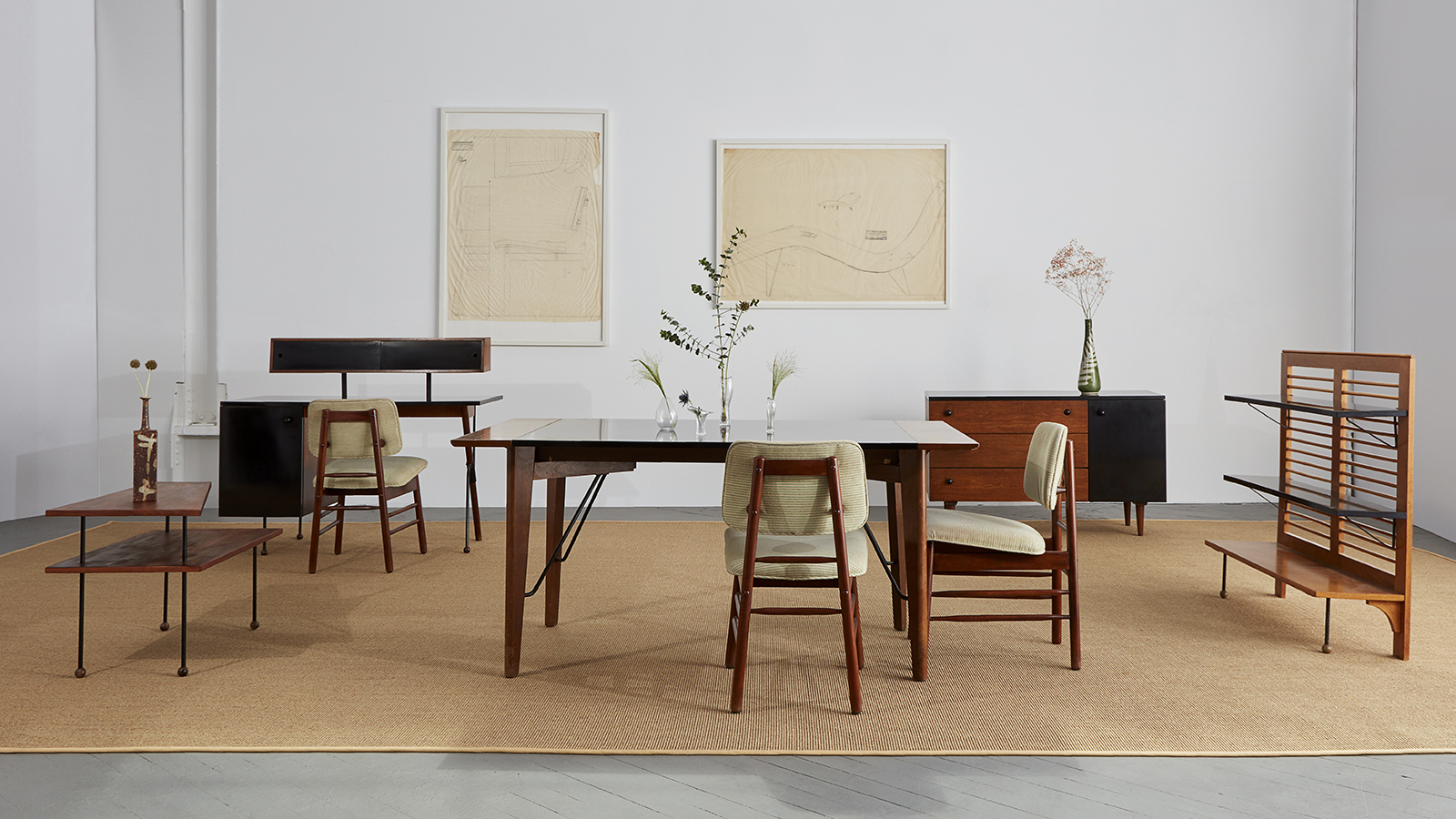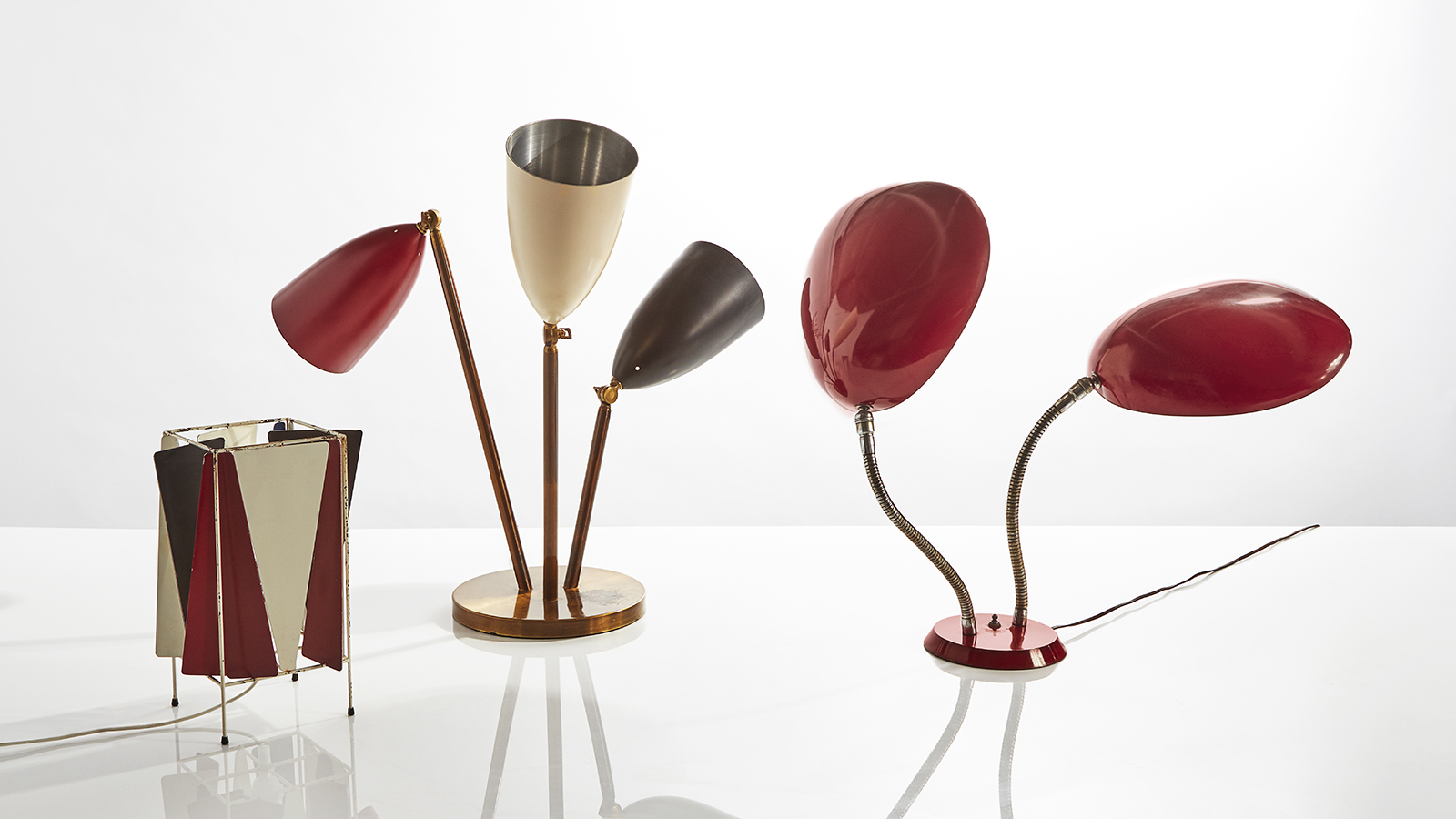Greta Magnusson Grossman: Modern Makes Sense
26 June - 22 August 2019
64 White Street
Featuring
Exploring the work of mid-century Swedish émigré designer and architect, Greta Magnusson Grossman, this exhibition, Modern Makes Sense, highlights her career as a prominent proponent of California modernism. Taking place on the lower level of the 64 White Street location, the exhibition is on view from June 26 to August 22.
Arriving in San Francisco with her husband in 1940, Grossman settled in the Los Angeles area and built a successful second design career in the United States. By 1942 she was approached by an executive of Barker Bros, billed at the time as the largest furniture store in the world. The start of a meaningful design collaboration began. Grossman continued to design for Barker Bros in the 1940s and was instrumental as an interior architecture consultant for the store’s Modern Shop, an innovative showroom initiative aimed at showcasing the best of modern interiors and furniture to a growing middle class market. Grossman’s modern furniture for Glenn of California and her lighting for Ralph O. Smith illustrate her important role in the California modern movement, in which design for the home grew out of the needs of contemporary living. Grossman stated in a 1951 interview that design, “is not a superimposed style, but an answer to present conditions. That is why it is ! It has developed out of our own preferences for living in a modern way. It expresses our habits and our tastes.” The same year that Grossman won the Museum of Modern Art’s “Good Design” designation in 1952, she designed a comprehensive collection called the “62 Series” with Glenn of California that became her most well-known. So named because Bob Baron, founder and owner of the company felt it was ten years ahead of its time, this collection brought together playful proportion and construction that was both futuristic and chic.
Always careful to advocate for modernism that makes sense, Grossman felt there was “no sense in discarding the old,” rather suggesting that consumers try to incorporate modernism into an organic mix within their home, avoiding the cold, tabula rasa approach of International style modernism. Grossman’s humanistic approach to modernism in the home garnered her much success in the period, and continues to offer a significant legacy for modern design in the home today.
Important works on view include furniture from the “62 Series,” a collection of innovative lighting for Ralph O. Smith, a rare chaise longue designed for Sherman Bertram, a unique and inventive asymmetrical coffee table, and a series of dining chairs that were included in the Museum of Modern Art’s “Good Design” exhibition in 1952.
R & Company’s archives department is the primary repository for the Estate of Greta Magnusson Grossman. This extensive collection includes project records, professional papers, and personal papers, as well as a large selection of drawings related to industrial design and architectural work, photographs, press, and promotional scrapbooks. Tapping into this rich resource, the exhibition will include important drawings, photographs, and ephemera that tell the fascinating story of Grossman’s pioneering design career in the United States.
Greta Magnusson Grossman: Modern Makes Sense is on view from June 26 to August 22 on the upper level of R & Company’s 64 White Street location and runs concurrently with the exhibition Uncrated Curated by Pembrooke & Ives.

